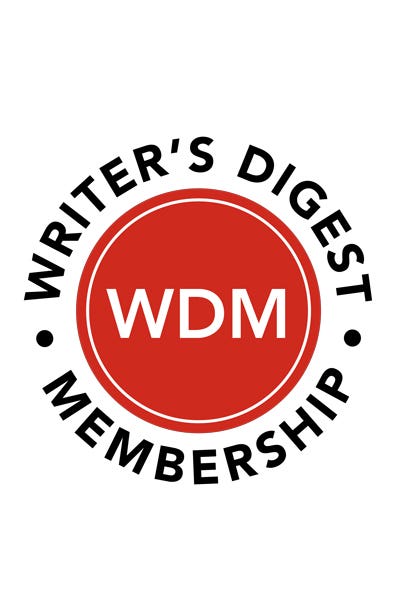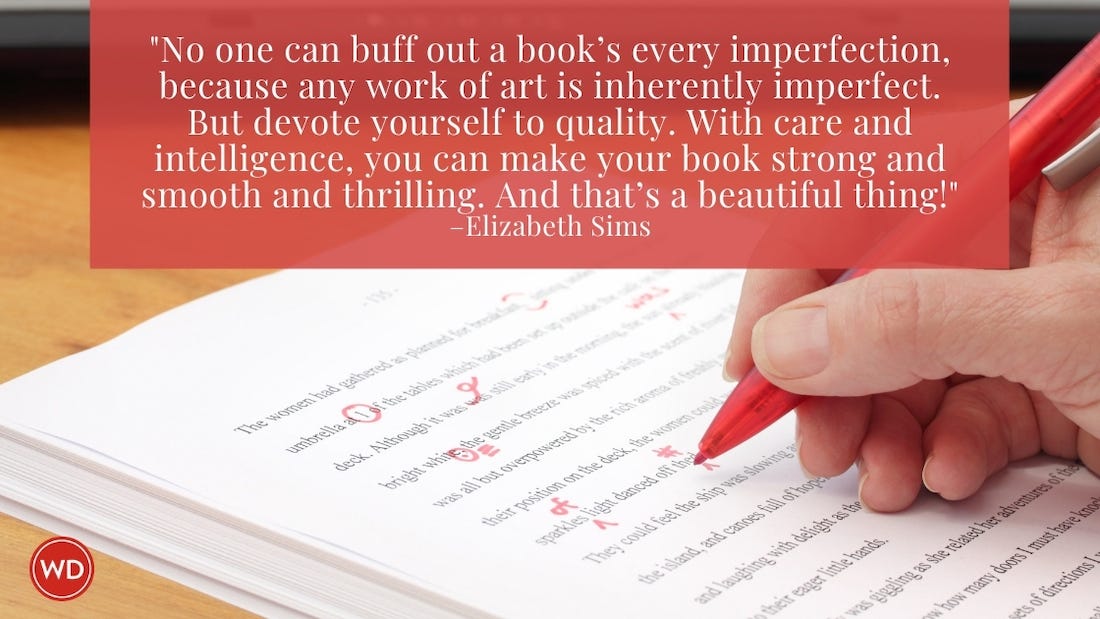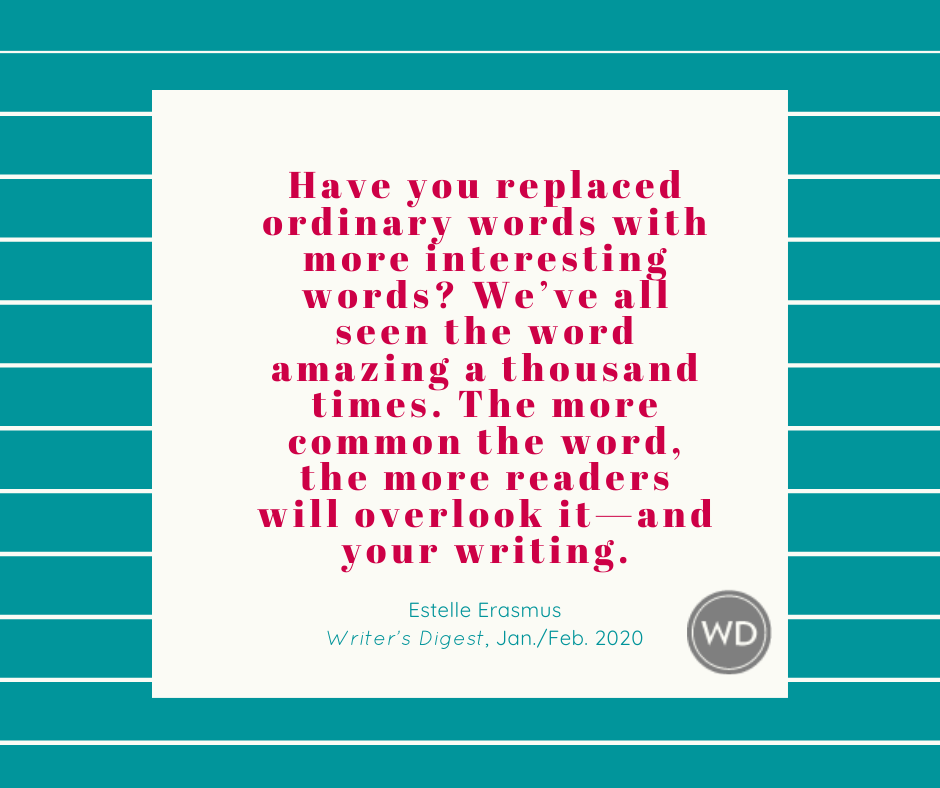Faster Than A Speeding Bullet
Fly through your writing assignments with these five tips for planning your projects so you get the best articles in the least time!
Congratulations, you finally got that assignment you wanted from the magazine you've been bugging for the last year. The editors loved your story idea. Or they came up with one of their own that they need right away and thought you'd be just the writer to handle it.
Now it's time to get it done—where do you start? How about with an old, but oh-so-true, cliche—time is money.
Write more per hour
Magazines usually pay based on word count. The editor couldn't care less if it takes you four hours or four days to get it done, as long as you give him the quality and content desired.
That means it's up to you to make the most efficient use of time possible. The faster you get the work done, the more you make per hour and the more time you have to do other freelancing and make even more money.
I don't know about you, but I'm a professional writer. I want to make lots of money in a profession not usually known for that. I have to be organized to accomplish my goal.
Luckily, organization is something that always has come naturally to me. I liked straightening my room as a kid. I actually asked to go to military school as a teenager. And, when I was first married, I used to drive my ex-wife crazy lining up bottles in the refrigerator by height (one of the many reasons we're no longer married, but that is definitely another story).
At my previous job (I work full time as a journalist and find time to freelance and teach writing), I oversaw a magazine, a newsletter and several directories in addition to planning three trade shows. But while some colleagues were saying they couldn't find enough time in the day, at night or on weekends to get their jobs done, I was leaving work early to coach my son's soccer team.
Don't worry; reading this article won't change you into me. Revel in who you are. But there's no harm in getting organized to maximize your output and minimize your effort.
1. Develop a timeline
Let's go back to our starting point—you receiving an assignment from a magazine. Let's also assume we're working on this story together and I'm organizing it. Where do we begin?
We can start by putting together our action plan. How much are we getting paid for this article? How much do we want to make per hour? Divide the second figure into the first to decide how long we'll devote to this project.
Say we're getting $750 for a 1,000-word story. We want to earn $125 an hour (that's my goal), so that means we should devote six hours to this project.
Next, think about how much time we'll need to write the story. I've always been a fast writer—I assume I can turn out 1,000 words in about an hour, then spend maybe another hour or two rereading and editing, double-checking facts and putting the first draft into final form.
So in this example, that would leave us about four hours for interviews. Unless I'm writing about something extremely technical, I figure no one interview will go more than a half hour.
So, we can do eight half-hour interviews for this story. That sounds about right. In my 26 years as a journalist, I've covered a lot of different topics and come to the realization that any expert has about 200 words of usable copy she can convey in a half-hour interview. If we get our eight good interviews, we'll have at least 1,600 words, more than enough to winnow our piece down to an information-packed story quoting a variety of solid sources.
2. Identify your sources
The next step is to find the sources we need for the story.
If we've written about this topic before, we should have some good ideas about where to start searching for the people we'll need to interview.
When approaching a new topic, I usually start with two online services that are free of charge for working journalists: ProfNet ( www.profnet.com) is sponsored by PR Newswire, and ExpertSource (www.businesswire.com/expertsource) is backed by Business Wire. Each allows you to enter queries for experts on a topic of your choice. You type in an inquiry and even can set a deadline for responses. You also can scan each service's expert list to find people who have listed the topic you might be searching for. The lists include academics, consultants and pretty much every public relations agency in the country, which means if the sources you're searching for have PR people (and who doesn't these days), you should be able to find them.
3. Plan your interviews
But as we gather sources, let's get organized about our interviewing as well. Somewhere in my career, I picked up the image of the interview process being like following the rings a stone makes when it's thrown into a lake.
If you're standing on a shore, the first thing you're likely to see are the circles radiating out from the submerged stone. If you follow from the outermost circle back to the center, you'll know where the stone is even if you hadn't seen it land in the water to begin with.
I organize my interviews like those circles. I start with experts farthest from the story's center. For example, if I'm profiling a company for a business publication, I would start with academic sources or consultants who know the industry.
The next circle would be people more familiar with the company I'm writing about, perhaps ex-officials or suppliers or others who have had direct contact. Stock analysts could be in this circle as well.
The next circle would be executives at the company, and the center of the story—the stone if you will—likely would be the CEO or chairman. As I work my way through the circles, I'm gathering more and more information, so by the time I reach my key interview, I should be knowledgeable enough to conduct a good interview and get some solid answers to my well-thought-out questions.
Always prepare questions in advance. Here, too, I usually start with general questions to put a source at ease, then work to more specifics. But if time is short, start with the key questions. Number your questions by importance so you know which you have to get answers to. Keep your interview focused. Many people like to ramble, or avoid tough questions. It's your job to keep the subject on topic and on time for your timetable.
I try to set up interview times in advance so I don't have to waste time calling back again and again. E-mail is a convenient way to set up interview times. Make use of it when possible, but try to avoid doing e-mail-only interviews—they're flat and dull and don't give you a chance to pounce on unexpected answers.
Keep an interview log sheet with names, phone numbers and e-mails on a single sheet of paper. Attach this to a file folder you create for whatever information you gather for the story. This will save you time looking up numbers again when you need to call someone back.
You'll have to call more people than you eventually interview; many people simply don't return calls or know nothing about your topic. But don't overinterview. When you start hearing the same answers again and again, chances are you've done enough interviewing.
As you're interviewing, keep all your notes on one notepad or, if you take notes on a computer, in one file folder. I keep a vertical file on my desk with files for each story I'm working on, filed in deadline order. Each folder has relevant info I've gathered from magazines, newspapers and the Web, my source list and a 8.5-by-11 inch pad with my notes for that story.
4. Get your notes in order
When we've done all our interviews, it's time to write. But first, we need to organize our notes; otherwise we'll spend more time looking for key quotes, facts and figures than we do writing.
I go through all my interviews and make notes on my notes—short summaries of what each source told me. I circle key quotes I might want to use in the story and number them so I can find them quickly later. I put sticky notes with the source's name at the start of each interview on my notepad so I can quickly get to the place I need to find a quote or fact later.
Taking notes on your notes is like studying for a test. Once done, you should have a pretty good idea what your story is going to say. Now it's time to get creative—in an organized way, of course.
5. Create a writing strategy
Put your notes aside. Think about how you'd describe the story to a friend. Do it in one sentence, boiling down all the information you've collected into one coherent statement. This helps me deal with information overload when learning about a new topic. It strips away the jargon and points of view, and gets me to the essence of what I want to say.
Once we have that sentence, it should become clear how to organize the story. If it doesn't, try doing an outline. Group information about a given topic together, and arrange your topics in an order that will be logical to the reader.
Next, try writing the start of your story. If I'm doing a 2,000-word feature, I'll write the first 500 words, summarizing key points I'm going to convey and hopefully encouraging the reader to read on. The next 1,200 words or so, I'll expand on that summary, fleshing out key points with quotes, facts, figures, whatever is needed. I look to the notes on my notes to find the information, and I make more notes to myself if there's any information I think I should double-check or look up.
I use the last 300 words to sum up, draw conclusions, look ahead or look back, as the story dictates.
Once done, put the story aside for a while. I'd recommend overnight if you have the time. That allows you to come back and edit it with a fresh eye. When you do so, cut extra verbiage and try not to end up with a piece that's a lot longer than your assigned length—that's just giving away your work for free.
Speaking of which, since I'm at the limit of what I promised for this piece, I'll stop now with some final advice.
Your time and work are valuable—don't give either away for less than you're worth. And to get what you're worth, organize your time and your efforts wisely and efficiently. You'll feel rewarded, and you may even have time to do a little soccer coaching or teaching on the side.
This article appeared in the June 2003 issue of Writer's Digest.









